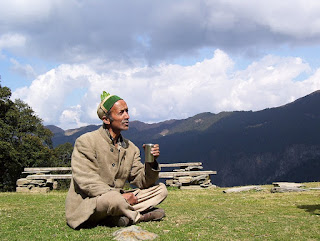Understanding altitude sickness
Altitude sickness—also known as acute mountain sickness (AMS), altitude illness, hypobaropathy, — is a pathological effect of high altitude on humans, caused by acute exposure to low partial pressure of oxygen at high altitude. It commonly occurs above 2,400 metres (8,000 feet). It presents as a collection of nonspecific symptoms, acquired at high altitude or in low air pressure, resembling a case of "flu, carbon monoxide poisoning, or a hangover".
It is hard to determine who will be affected by altitude-sickness, as there are no specific factors that compare with this susceptibility to altitude sickness. However, most people can climb up to 2,400 meters (8,000 ft) normally.
Acute mountain sickness can progress to high altitude pulmonary edema (HAPE) or high altitude cerebral edema (HACE), which are potentially fatal.
Chronic mountain sickness, also known as Monge's disease, is a different condition that only occurs after very prolonged exposure to high altitude.
Causes
The causes of altitude sickness are not fully understood. The percentage of oxygen in air, at 21%, remains almost unchanged up to 70,000 feet (21,000 m). The RMS velocities of diatomic nitrogen and oxygen are very similar and thus no change occurs in the ratio of oxygen to nitrogen. However, it is the air pressure itself, the number of molecules (of both oxygen and nitrogen) per given volume, which drops as altitude increases. Consequently, the available amount of oxygen to sustain mental and physical alertness decreases above 10,000 feet (3,000 m).
Dehydration due to the higher rate of water vapor lost from the lungs at higher altitudes may contribute to the symptoms of altitude sickness.
The rate of ascent, altitude attained, amount of physical activity at high altitude, as well as individual susceptibility, are contributing factors to the onset and severity of high-altitude illness.
Altitude sickness usually occurs following a rapid ascent and can usually be prevented by ascending slowly. In most of these cases, the symptoms are temporary and usually abate as altitude acclimatisation occurs. However, in extreme cases, altitude sickness can be fatal.
Primary symptoms
Headaches are the primary symptom used to diagnose altitude sickness, although a headache is also a symptom of dehydration. A headache occurring at an altitude above 2,400 metres (8,000 feet = 76 kPa), combined with any one or more of the following symptoms, may indicate altitude sickness:
· Lack of appetite, nausea, or vomiting
· Fatigue or weakness
· Dizziness or light-headedness
· Insomnia
· Pins and needles
· Shortness of breath upon exertion
· Nosebleed
· Persistent rapid pulse
· Drowsiness
· General malaise
· Peripheral oedema (swelling of hands, feet, and face).
· Diarrhea
Severe symptoms
Symptoms that may indicate life-threatening altitude sickness include:
Pulmonary oedema (fluid in the lungs):
· Symptoms similar to bronchitis
· Persistent dry cough
· Fever
· Shortness of breath even when resting
· Cerebral oedema (swelling of the brain):
· Headache that does not respond to analgesics
· Unsteady gait
· Gradual loss of consciousness
· Increased nausea




















